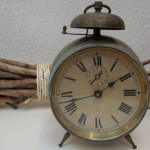Certificates of Installation

Monitoring stations are often asked by their dealers to issue a certificate that can be given to their subscriber for use when applying “for a discount on their home or business insurance. Although this practice is fairly commonplace, it is not something that should be supported by the stations.”
The only true and meaningful certificates are those that carry with them, a measure of assurance that the installation has met acceptable industry standards, meaning reliable equipment properly installed and tested, along with dependable methods of transmitting signals to a well-established monitoring station.
Underwriters’ Laboratories of Canada (ULC) is generally recognized as the only independent organization that is dedicated to such a cause. Their certificate program requires that only equipment that has been tested by independent experts who have no bias toward the outcome of the tests shall be used.
Once the proper equipment is selected, it must also be installed in a prescribed manner that assures the most effective performance possible. Upon completion of the installation, the installer must provide at least one suitable and approved means of communicating alarm signals to a monitoring station that must itself, meet or exceed the standards demanded by ULC.
In order to be able to issue ULC Certificates, the installation company must itself be ULC-listed. The requirements for such listings include the need to apply for certification. Once the application is accepted, ULC will arrange for its field representative to visit at least 3 installations while accompanied by a representative of the installation company. Such visits are meant to ensure that the standards have all been met. During these field inspections, the alarm systems will also be tested through to the monitoring station, which must already have undergone inspection and listing in its own right.
Once ULC has satisfied itself that the applicant understands and can perform according to their standards, the installer company will be listed by ULC and will thereafter, in conjunction with that specific monitoring station, be permitted to arrange for the issuance of a ULC Certificate for each site that has such a requirement.
Annual follow-up inspections are also required. These follow-up visits will involve the random selection by the inspector of 3 sites for which the company has issued certificates. As during the initial inspections, it will be necessary to exhibit adherence to all standards, a signed agreement with the subscriber and a signed agreement with the monitoring facility (if it is a 3rd party provider).
There are obvious costs for all these services –both to the alarm installation company and the monitoring station – and those costs will largely be borne by the installing company.
With all that in mind, alarm dealers can, if desired, prepare and provide a certificate of their own that may well be accepted by the customer’s insurance company. Sample forms of such certificates are often available from your monitoring company and can be modified as required by your staff. In each instance, this “certificate” should show the name and address of the subscriber, the name and address of the installation company, the fact that the system is being monitored (if the station is ULC-listed it might be wise to mention that fact) and what types of signals are included in the monitoring service (burglar alarm, fire alarm, sump pump failure, etc.).
CSI Magazine













There are 0 comments
Leave a comment
Want to express your opinion?
Leave a reply!